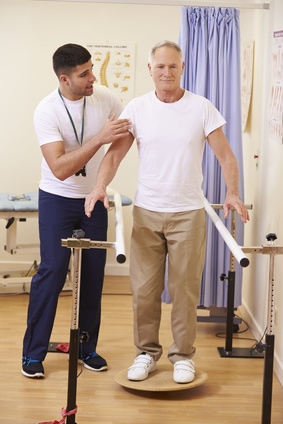A non-invasive imaging technique offers insight into the level of recovery possible after a spinal cord injury.
Within the bony spinal column rests the spinal cord. As the freeway that exits the brain and provides the body with the ability to move, sense, and feel, the spinal cord is the primary pathway of the nervous system in the human body.
Injury that displaces or breaks the vertebrae of the backbone has the possibility of sending slivers of bone into the spinal cord, severing, compressing, and compromising its ability to transmit information to the body, arms, and legs. While trauma is the leading cause of serious spinal cord injury (SCI), medical mistakes during back surgery can also leave patients with paralysis, dysfunction, and constant pain.
A recent study published in the journal Neurology looked at the use of imaging at the outset of injury and at intervals after injury. The idea was to see how the body—and the brain—respond to SCI over time and how that information may help with treatment and prognosis.
Imaging Offers A Look At Improvement And Decline After Spinal Cord Injury
Using magnetic resonance imaging (MRI), researchers examined 15 patients with acute SCI at the time of injury, and at two, six, 12, and 24 months afterwards. Scientists compared 156 scans for 18 different criteria.
The findings of the study offer some hope—and some hard information about the nature of healing after a spinal cord injury. Consider these conclusions offered by the research:
- When the spinal cord is injured, nerve cells die. The death of nerve cells at the site of the spinal injury appears to cause the death, or atrophy, of cells in the brain as well. So—when neurons in the spine are no longer functioning, nerve cells in the brain wither and die as well. This means that although the brain was not injured directly, the function of the brain is impaired by the death of nerve cells in the spinal cord.
- As might be expected, the smaller the area of injury of the spinal cord, the less neurological damage occurs in the brain. Less nerve damage improves the chances of long-term recovery.
- During the first six months, recovery at the injury site is the greatest. Interestingly, the level of loss of neural function in the brain is also the greatest during this time. As reported by the study authors, “This indicates a fierce competition between compensatory and neurodegenerative changes early after injury. The battle seems to be lost in favor of neurodegeneration over time.”
- Changes observed in scans at six months offered some indication of the possibility of functional outcomes experienced at two years.
Just as nerve cells in the spinal cord communicate with partner neurons in the brain when healthy, they also do so after injury. Researchers intend to follow up with these patients at the five-year mark. Future studies are planned to incorporate intensive arm and leg movements to determine if the activity can slow the loss of neural cells.
SCI is always a devastating injury. Improvements in diagnosis and treatment may provide critically needed improvements in long-term outlook for those who suffer SCI.
Experienced Medical Malpractice Firm Fights For Compensation On Your Behalf In Washington, DC
Serving injured patients around the country from offices in Baltimore, Maryland, and Washington, D.C., Schochor, Staton, Goldberg, and Cardea, P.A. is a skilled medical malpractice law firm that protects the rights and pursues compensation on behalf of clients injured by mistake or negligence. Call 410-234-1000 or contact us today to schedule a free consultation to discuss your injury.













